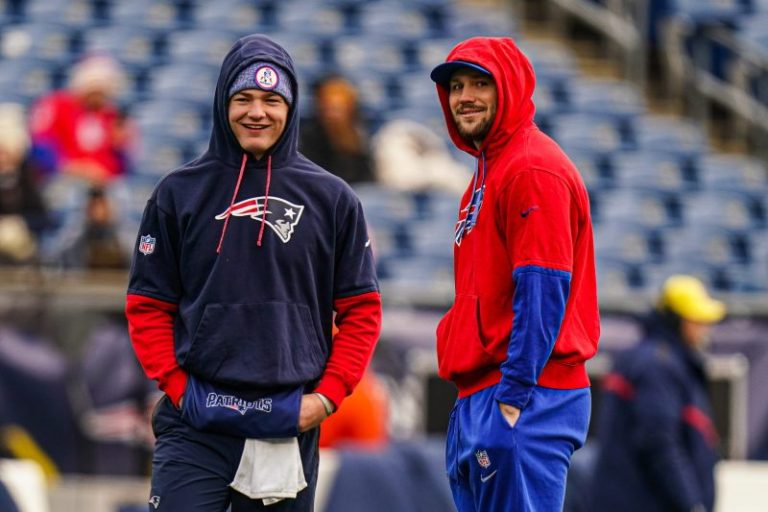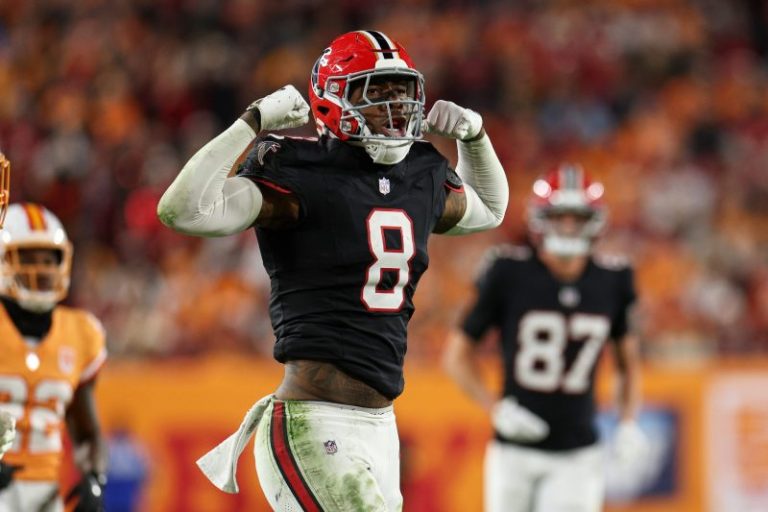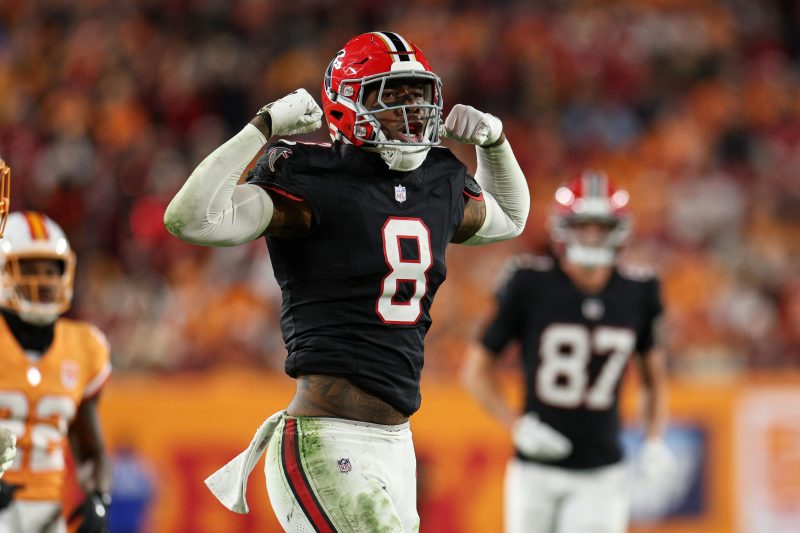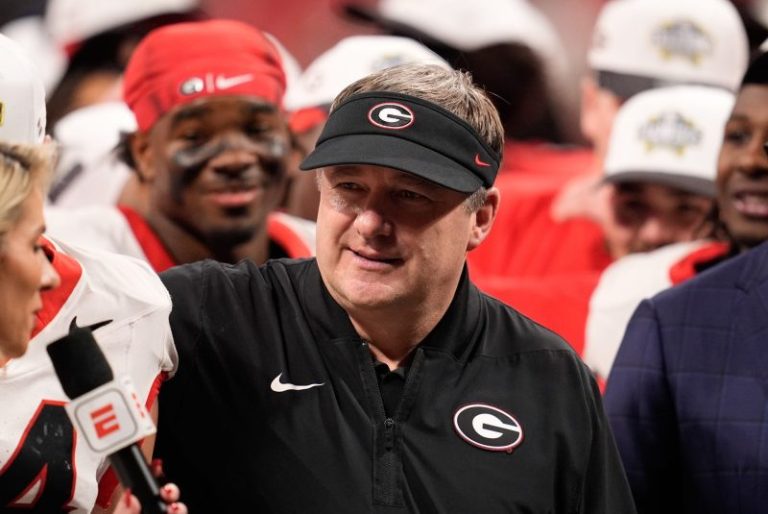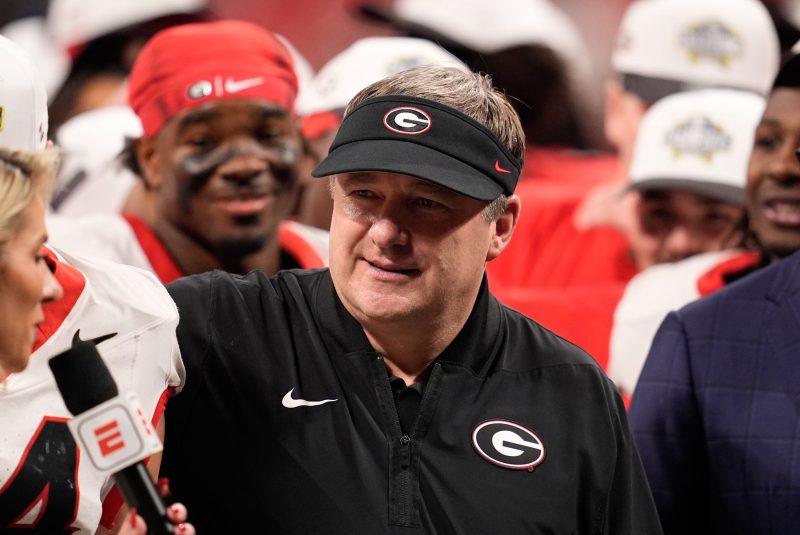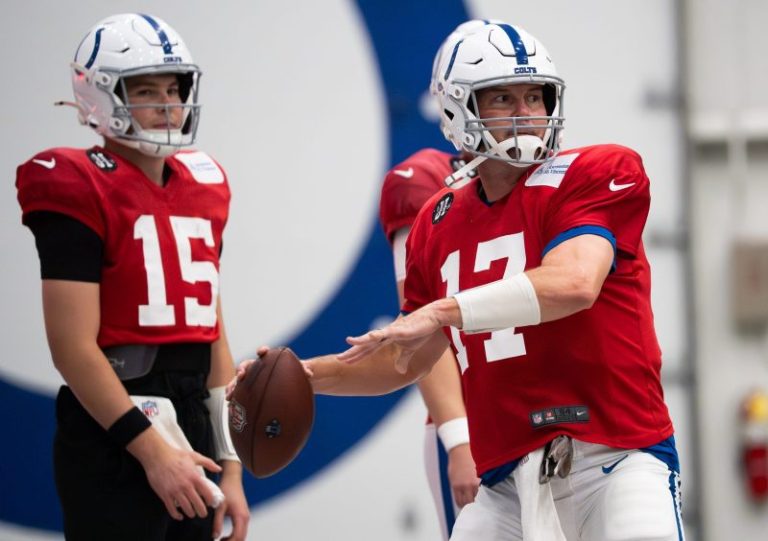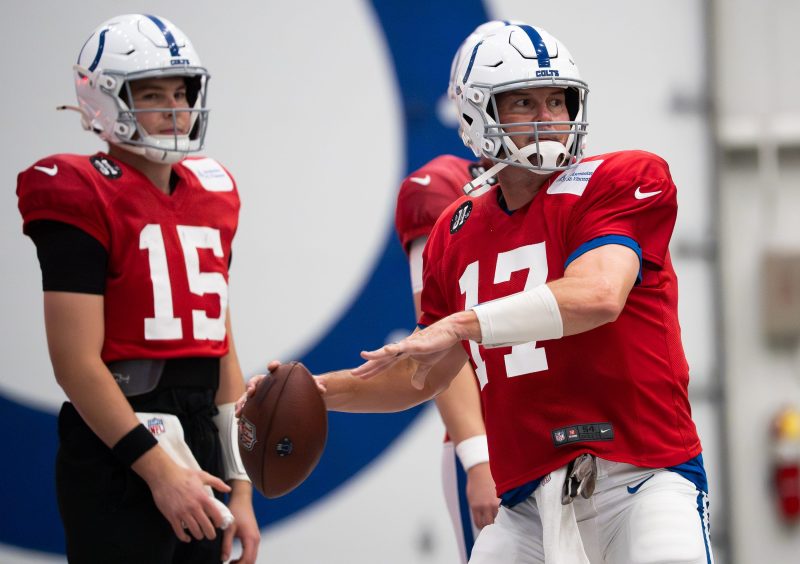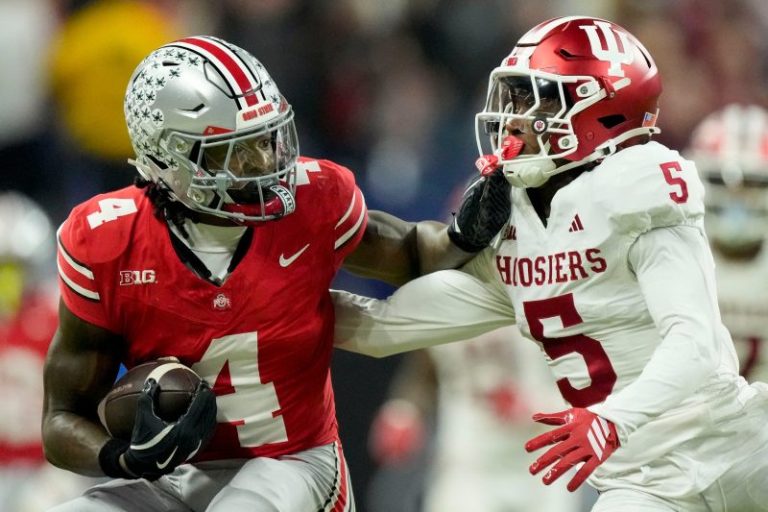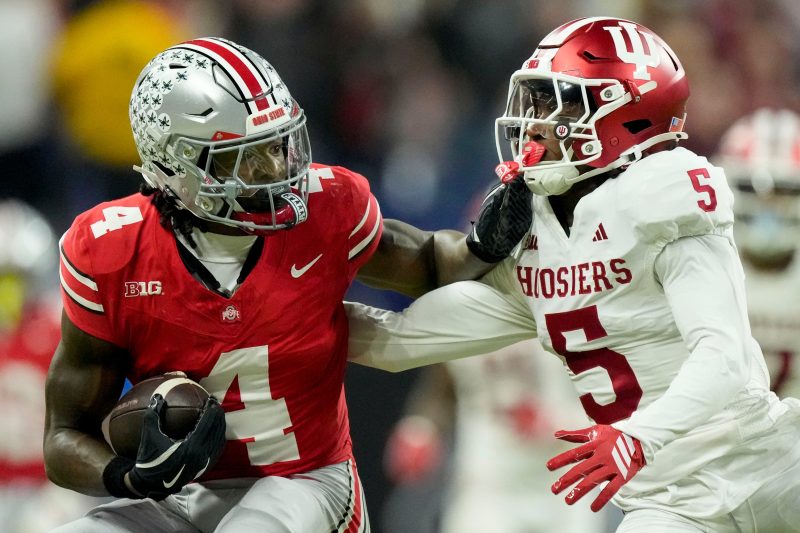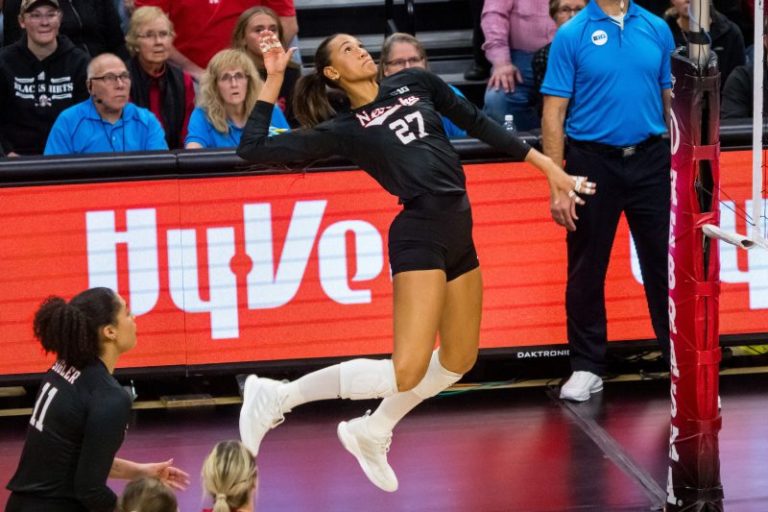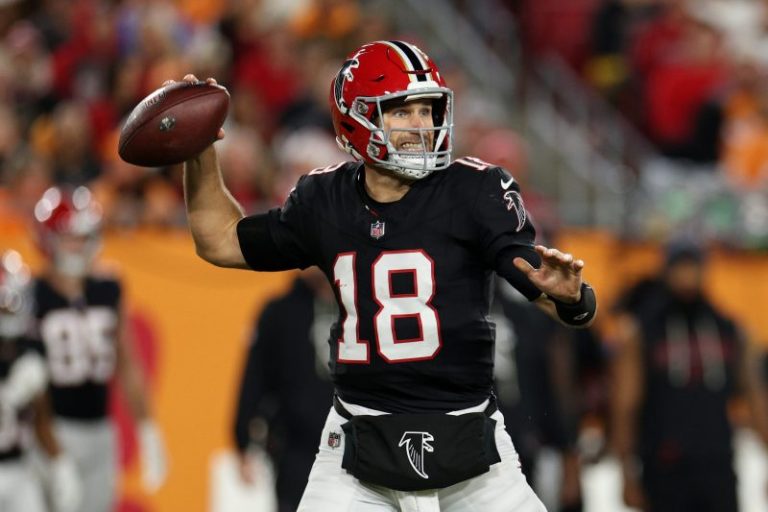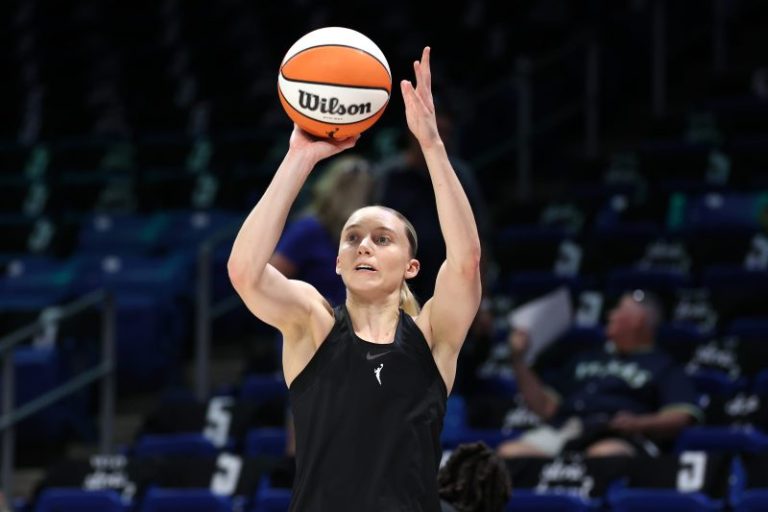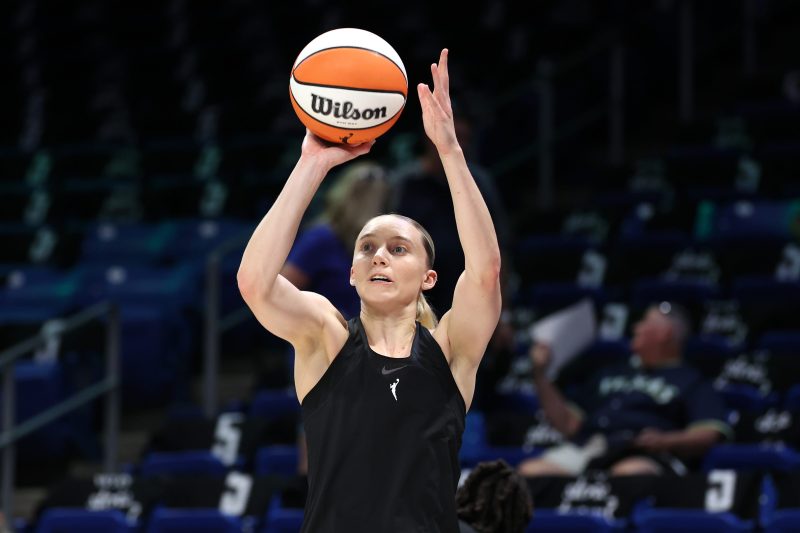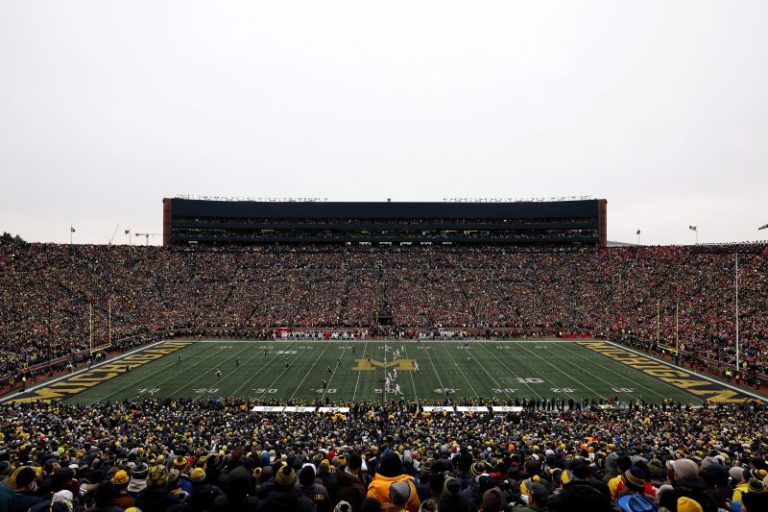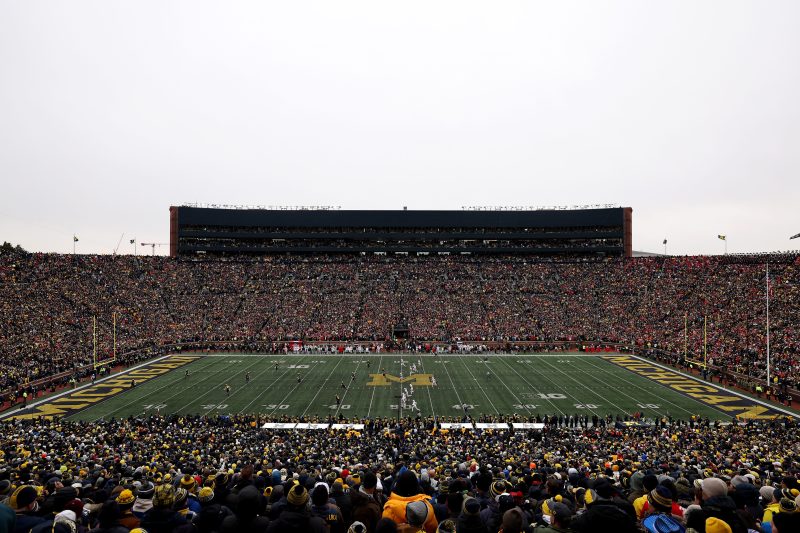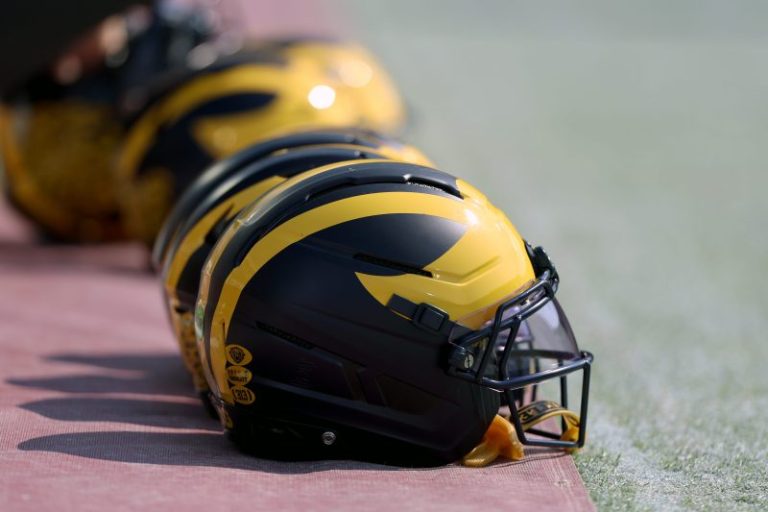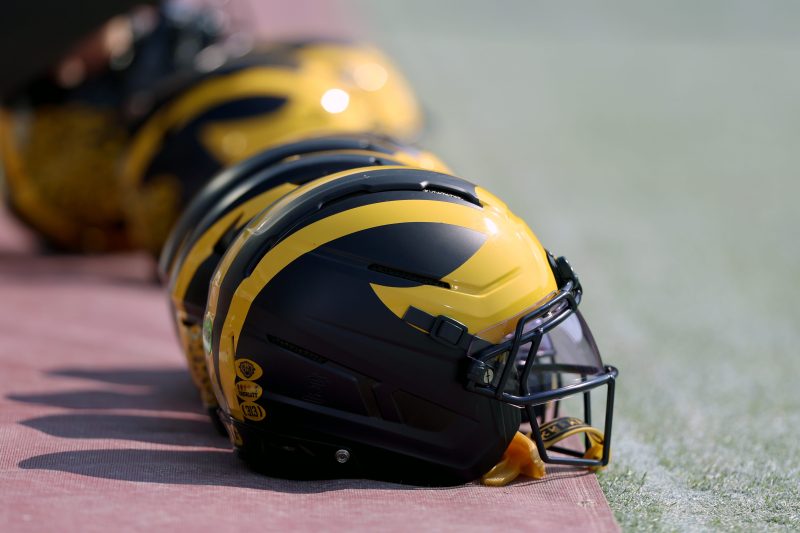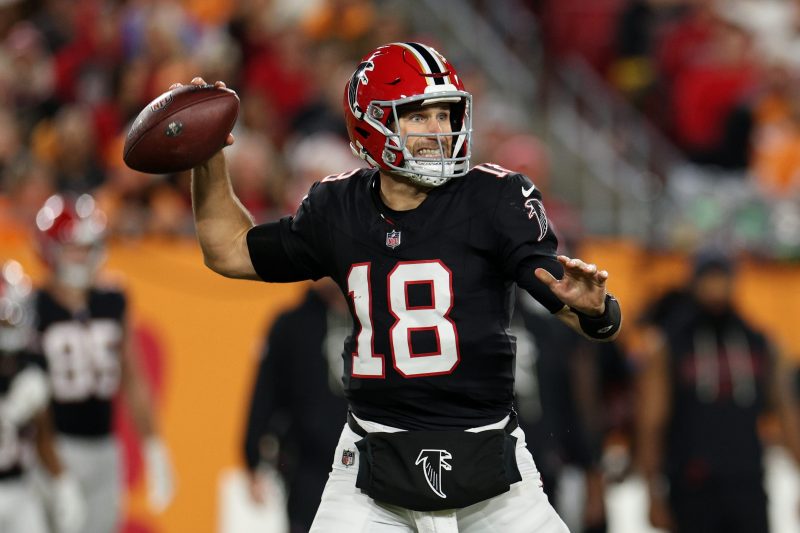
Behind all of the boos that rained down on the Tampa Bay Buccaneers at Raymond James Stadium on Dec. 11, one could almost hear the cheering from a little further up north.
The Carolina Panthers are in sole possession of first place in the NFC South after the Bucs’ 29-28 loss to the Atlanta Falcons on ‘Thursday Night Football.’ Carolina still has to play Tampa Bay twice this season in games that likely will determine the division champion, but the Buccaneers look especially vulnerable of late.
Their loss to start Week 15 was also their fifth loss in the last six games, which has allowed the Panthers to climb into the NFC South lead.
Atlanta, meanwhile, can relish playing something of a spoiler for the four-time reigning division champions. The Falcons were eliminated from playoff contention last week. But even without starting quarterback Michael Penix Jr. and top receiver Drake London, Atlanta came away with the upset win on the road to win its fifth game of the season.
There were standouts from both sides. Mike Evans had a massive comeback game for the Buccaneers after missing six straight games with a broken collarbone. The bigger story was Falcons tight end Kyle Pitts, who had the best game of his career against Tampa Bay.
Here’s how the Falcons’ 29-28 win happened on ‘Thursday Night Football’:
Buccaneers vs Falcons takeaways
- Baker Mayfield missed Mike Evans. Like, really missed Mike Evans. The veteran wide receiver had missed six straight games with a broken collarbone before making his return in Week 15 against the Falcons. It’s a near-certainty that Evans will lose his 1,000-yard season streak given the nine total games he has missed this year, but Mayfield tried his darnedest to get his top receiver back on track. The Bucs’ quarterback targeted Evans 12 times on ‘Thursday Night Football,’ five times more than his second-most-targeted pass-catcher, Emeka Egbuka. The result was a six-catch, 132-yard night from the 12-year veteran. He’s not quite back on 1,000-yard pace, but Evans showed plenty of evidence that he’s got more in the tank. His most notable catch of the night was a 45-yard reception he caught over the outstretched head and arms of Falcons cornerback Cobee Bryant in a true display of ‘Mossing.’
- The Falcons finally have a pass rush, but they’re a sloppy team. First-round rookie James Pearce Jr. had two of his team’s five sacks on ‘Thursday Night Football,’ and Mayfield was facing tons of pressure all night. Pearce is within striking distance of a 10-sack season as a rookie, which would make him the first Falcons player with double-digit sacks in a season since Vic Beasley in 2016. While Pearce was a positive, the penalties were a negative. Game officials flagged Atlanta a staggering 19 times for 125 penalty yards during the ‘Thursday Night Football’ game. That included two in one drive as the Falcons were playing red-zone defense, giving the Bucs two free first downs in goal-to-go situations. One was on kicker Zane Gonzalez for failing to kick the ball off of the ground on a kickoff. Thanks in large part to the pass-rush attack, Atlanta managed to overcome the issues with penalties for a fifth win of the season.
- This was the Kyle Pitts Game. The Falcons’ tight end had the kind of game that their fans (and fantasy managers with Pitts in their lineups over the years) have been waiting for. In the end, he had 156 yards and three touchdowns on 10 catches. According to NFL senior researcher Tony Holzman-Escareno, Pitts became the first tight end with 150+ yards and 3-plus touchdowns in a game since Shannon Sharpe in Week 6 of the 1996 season. Not only did Pitts only have one touchdown all season coming into Week 15, he managed to match or surpass the touchdown total he had in four separate seasons in his five-year career. He also had only ever had one multi-touchdown game before – a two-touchdown outing against the Buccaneers in Tampa in Week 8 last year. Go figure.
Buccaneers vs Falcons score update: Zane Gonzalez walks it off
In a game where the Falcons didn’t roll over, it took all of the clock to take the win. After being down 28-14 in the fourth quarter and missing two 2-point conversion attempts, the Falcons take a 29-28 win off the leg of Zane Gonzalez, who nailed a 43-yard field goal for the win.
Falcons win, 29-28
Kyle Pitts stats
Pitts is having the best game of his career in the Week 15 edition of ‘Thursday Night Football.’
With just over three minutes to play, here’s how his stats against the Buccaneers look so far:
- Targets: 11
- Receptions: 10
- Receiving yards: 152
- Yards per reception: 15.2
- Touchdowns: 3
Pitts had one touchdown all season coming into tonight’s game. He has quadrupled that season total in 56.5 minutes of game action in Week 15.
Buccaneers vs Falcons score update: Kyle Pitts has third TD of game
It’s Kyle Pitts night in Tampa. The Falcons’ tight end is having the best game of his career with 10 catches for 152 yards and three touchdowns so far.
Atlanta was unable to convert its two-point conversion attempt after a touchdown for the second straight drive, so the Buccaneers still lead, 28-26, with 3:34 left.
Who is Devin Culp?
Devin Culp is a second-year tight end for the Tampa Bay Buccaneers. Tampa Bay drafted Culp in the seventh-round of last year’s NFL draft after he ran a 4.47-second 40-yard dash at the NFL Combine.
Culp is listed as the third tight end on the Buccaneers’ depth chart, but he’s playing as the team’s No. 2 tight end on ‘Thursday Night Football’ with Cade Otton out. The second-year tight end scored his first touchdown of his career in the third quarter.
Buccaneers vs Falcons score update: Bijan Robinson, Falcons strike back
Robinson was responsible for 23 yards on Atlanta’s 65-yard scoring drive, with the most important six yards coming at the end for an untouched touchdown run.
The Falcons still trail, 28-20, after the failed two-point conversion. There’s still 9:37 left to play.
What is an octopus in the NFL?
An ‘octopus’ is a colloquial term that means a player scores a touchdown and also the 2-point conversion, as Chris Godwin did on the prior Buccaneers score.
Buccaneers vs Falcons score update: Chris Godwin extends lead with TD grab
Godwin spent the early part of the season recovering from a dislocated ankle and then a fibula injury that kept him out of eight games in total this season. He finally score his first touchdown of the season in Week 15 on a three-yard pass from quarterback Baker Mayfield.
The Bucs then decided to go for two to make it a two-touchdown game, and Godwin caught a very similar looking pass for the two-point conversion.
Tampa Bay leads 28-14 with 13:34 left in the game.
Mike Evans injury update: Buccaneers WR shaken up after hit
The Buccaneers wide receiver returned from a broken clavicle in Week 15, and with great production. But he was shaken up on a hit at the end of the third quarter after making a catch.
He was examined quickly by medical staff and returned to the field at the start of the fourth quarter.
Buccaneers vs Falcons score update: Tampa re-takes lead with Devin Culp TD
The Falcons had appeared to stop Tampa Bay on a third-and-goal play, but Atlanta nickel back Dee Alford was called for illegal contact, then linebacker Divine Deablo got a flag for a face mask.
So after two new fresh sets of downs, the Buccaneers’ tight end found the end zone to reclaim the lead for Tampa Bay.
Culp’s first career touchdown gives the Bucs a 20-14 lead with 6:22 left in the third quarter.
Buccaneers vs Falcons score update: Bucs down by one at half
The Buccaneers were unable to complete a touchdown drive in the final moments of the first half, but their kicker managed to cut their deficit to one point as time expired on the second quarter.
McLaughlin’s 52-yard field goal was his second make of the night. The Falcons still lead, 14-13, at halftime.
Buccaneers vs Falcons score update: Kyle Pitts finds end zone again
For the first time tonight, the Falcons have the lead. Once again, it was tight end Kyle Pitts with the score.
Pitts’ second touchdown of the night is also his third of the season, and it gives Atlanta a 14-10 lead with 38 seconds left in the first half.
Buccaneers vs Falcons score update: Chase McLaughlin field goal gives TB lead
The Bucs’ kicker knocked through his first field goal attempt of the night from 49 yards out to push his team to a three-point lead.
It’s 10-7 Buccaneers with just over two minutes left in the first half.
Who is Cobee Bryant on the Falcons?
Bryant is a rookie cornerback who joined the Falcons as an undrafted free agent earlier this year. Atlanta elevated him from the practice squad in late November.
Outside of a similar-sounding name, there is no relation to the deceased basketball great.
What is a Buccaneer?
Outside of a player for the Tampa Bay football franchise, a buccaneer today is a synonym for ‘pirate,’ though the origin dates back to explicitly to the privateers of the 17th and 18th centuries who used to sail the Caribbean sea.
Buccaneers vs Falcons score update: Kyle Pitts finds end zone
For the first time since Week 4, the Falcons’ top tight end is on the board and in the end zone. His second touchdown of the season came on an eight-yard pass from Kirk Cousins and drew Atlanta even with the Buccaneers early in the second quarter.
The game is all tied up at 7 points each with 12:11 left in the first half.
Buccaneers vs Falcons score update: Sean Tucker opens scoring
A replay review overturned what was initially ruled a touchdown by second-year wide receiver Jalen McMillan on his first catch of the season. Instead, Tampa Bay had to run a couple of extra plays from the 1-yard line, and running back Sean Tucker pushed his way across the goal line for the first score of the night.
The Buccaneers lead, 7-0, with 1:38 left in the first quarter.
Kirk Cousins contract
- Length: Four years
- Value: $180 million
- AAV: $45 million per year
Cousins signed his four-year, $180 million deal with the Falcons before the 2024 season. He is tied with Chiefs quarterback Patrick Mahomes for the 14th-highest AAV at his position.
Just over one month after signing Cousins, Atlanta drafted rookie quarterback Michael Penix Jr. in the first round of the 2024 NFL Draft.
Since joining the Falcons, Cousins has appeared in 20 games over two seasons with 18 starts. The veteran quarterback is in line to start the remainder of the Falcons’ games during the 2025 regular season after Penix underwent surgery to repair a partially torn ACL.
Are the Falcons eliminated from the playoffs?
Yes, the Falcons are both eliminated from the playoffs and clinched a losing record for the eighth consecutive season.
Who is the Falcons owner?
The Falcons are owned by Arthur Blank, who purchased ownership of the Atlanta-based franchise in 2002. Blank was a co-founder of The Home Depot in 1978.
He owns two other sports franchises: MLS’s Atlanta United FC and TGL’s Atlanta Drive GC. Blank also owns the Atlanta-based expansion team in the NWSL that it set to debut in the women’s soccer league 2028.
What time does the Falcons game start?
How to watch Buccaneers vs. Falcons
- Live stream: Amazon Prime Video
- Tampa market: WTVT (Fox 13) | Atlanta market: WAGA (Fox 5)
The NFL’s ‘Thursday Night Football’ game will stream exclusively on Amazon Prime Video for national viewers. For those in the Buccaneers TV market, WTVT (Fox 13) will air the game. In Atlanta, viewers can tune to WAGA (Fox 5).
Buccaneers creamsicle jersey
The Buccaneers reintroduced their orange ‘Creamsicle’ jerseys this season, uniforms which they wore for the first 21 years of their existence.
Atlanta Falcons inactives today
Here’s the complete list of Falcons who won’t see the field vs. the Buccaneers:
- WR Drake London
- WR Jamal Agnew
- ILB JD Bertrand
- OL Michael Jerrell
- WR Casey Washington
- WR Malik Heath
- DL Elijah Garcia
Buccaneers inactives vs. Falcons
Tight end Cade Otton will not play tonight vs. Tampa Bay, and it’s official that Mike Evans will see the field. Here’s the full list of inactives:
- QB Connor Bazelak
- LB Sirvocea Dennis
- G Elijah Klein
- CB Benjamin Morrison
- TE Cade Otton
- DL Elijah Simmons
- S Tykee Smith
Is Kyle Pitts playing tonight?
Yes, the Falcons tight end is active and set to play despite carrying a questionable status entering the game.
Is Mike Evans playing tonight?
The Buccaneers wide receiver is expected to play tonight, but in a limited role, per ESPN. The wide receiver is returning from a fractured collarbone which he suffered in Week 7.
Is Baker Mayfield playing tonight?
Yes, the Buccaneers quarterback is expected to start despite dealing with a left shoulder injury he suffered in Week 12. Mayfield has not missed any time while nursing the injury.
Buccaneers vs. Falcons TNF live stream
- Stream:Amazon Prime Video | Fubo (local market)
Amazon Prime Video will air the Buccaneers-Falcons ‘Thursday Night Football’ matchup. Those in local TV markets can watch the matchup on Fubo.
Watch ‘Thursday Night Football’ with a Prime Video subscription
Buccaneers vs. Falcons predictions, picks
Tampa Bay hit a roadblock with injuries halfway through the season, which explains why they’ve lost four of their last five. They just lost to the lowly Saints at home, but they still control their playoff hopes. It sounds like they’re finally getting healthy with Tristan Wirfs, Mike Evans and Jalen McMillan potentially returning. Atlanta’s offense is one-dimensional without Drake London, and the strength of the Bucs defense is against the run. Tampa Bay’s push for the playoffs starts tonight. They’ll win by a touchdown and prepare for a massive divisional clash against the Panthers with a few extra days of rest.
Prediction: Buccaneers 23, Falcons 17
Buccaneers vs. Falcons odds
Provided by BetMGM Sportsbook; access USA TODAY Sports Scores and Sports Betting Odds hub for a full list.
- Moneyline (ML): Tampa Bay -225 (Bet $225 to win $100) | Atlanta +185 (Bet $100 to win $185)
- Against the spread (ATS): Tampa Bay -4.5 (-110) | Atlanta +4.5 (-110)
- Over/Under (O/U): 44 (O: -110 | U: -110)
This post appeared first on USA TODAY


